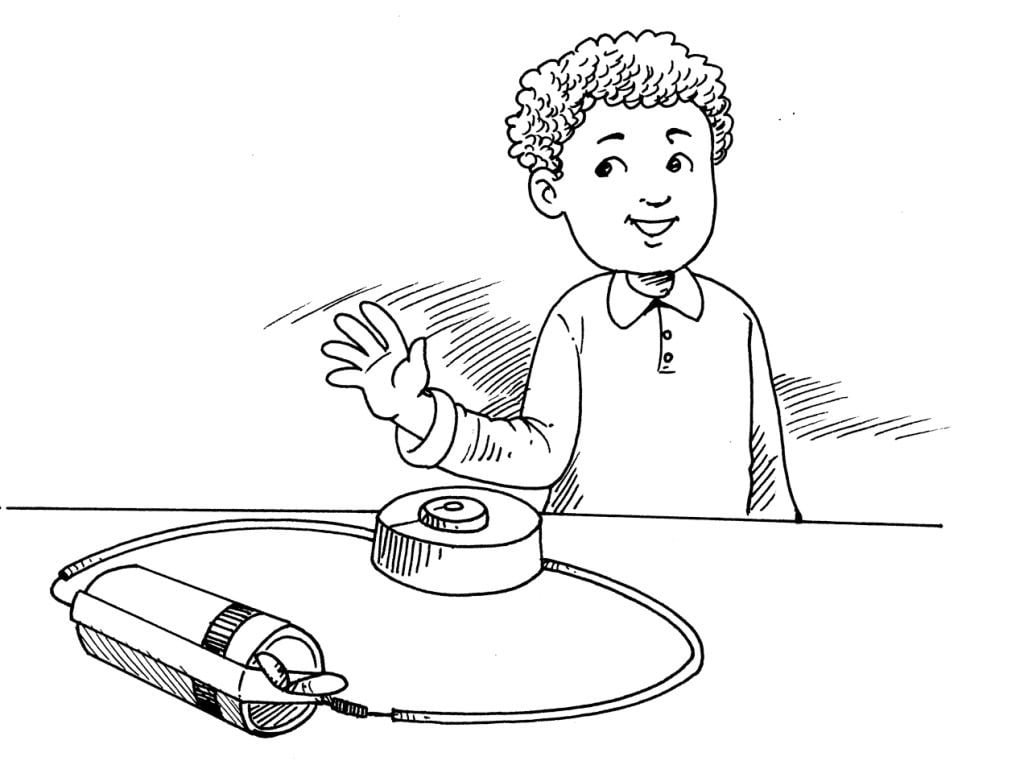
It’s time for a break. Instead of resting, however, you get to assemble a simple circuit. This working circuit will be used in several of the following experiments. Right now, you need to find the components, making sure they match up, and assemble the circuit correctly.
Things Required:
Buzzer or bicycle horn (1.5-volt or 3-volt device)
One or two “D” cell batteries
Battery holders
Connecting wires with each end stripped 1½ inches bare of insulation
Wire stripper
Directions:
Find a buzzer or bicycle horn. Buzzers can sometimes be removed from old board games that have “buzzing” sounds. If you do remove the buzzer from a game, write down the type and number of cells needed to energize the buzzer. Remember, you’ll need to match your battery supply to the electrical needs of this device.
If you don’t find a board game buzzer, a bicycle horn might work. Some horns can be removed from their streamlined case. If so, you’ll need to identify the terminals to the horn. If the horn can’t be separated from the case, remove the cell. Attach wires to the terminals that are exposed inside the battery holder. These wires can then be attached to your circuit as direct paths to the buzzer. Again, you’ll need to match up the horn with the correct power supply.
And if all else fails, there’s always the local electronics store. They should have both 1.5-volt and 3-volt buzzers.
Your simple circuit should look like what’s shown here. In the following experiments, you’ll need to add this circuit to different types of switches. Before you do, make sure the buzzer works.
This Is What Happens:
When the circuit is complete, electricity flows. This current of electrical charges “energizes” the horn, which causes its sound-producing parts to vibrate. We detect the vibrations as a buzzzz.
